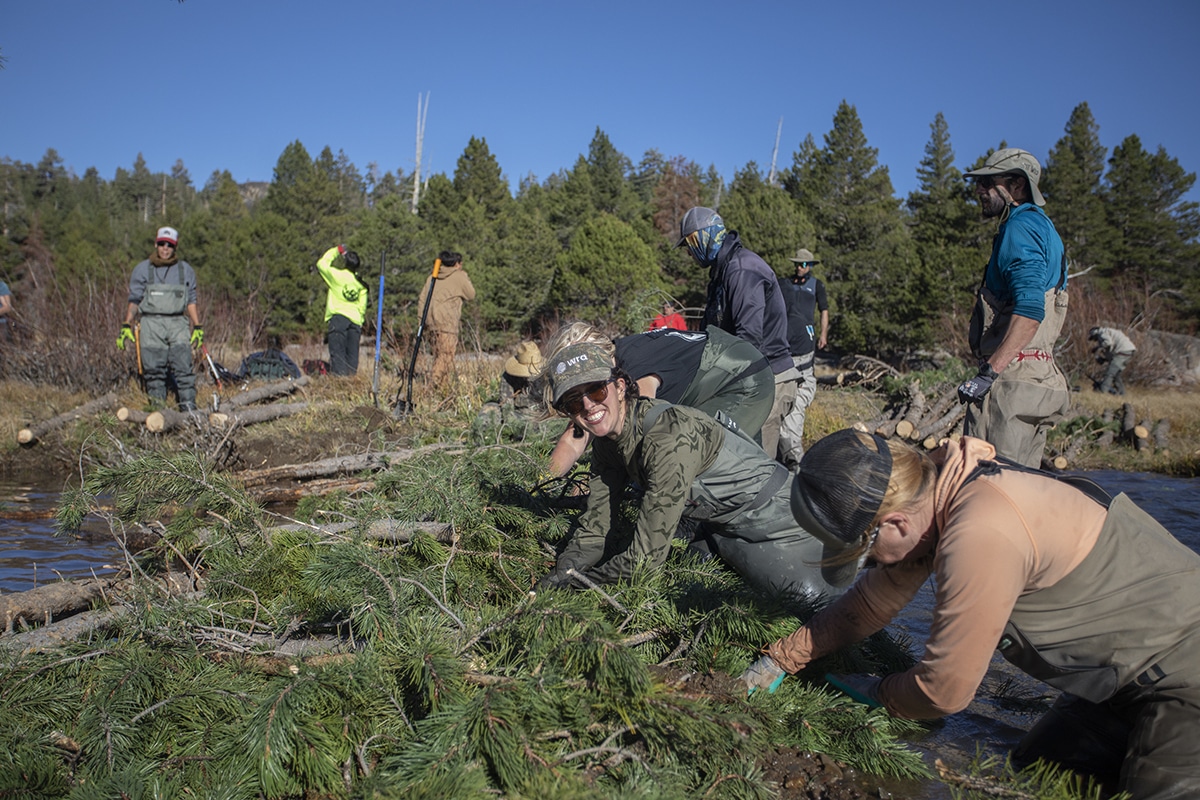In October, WATER Institute Co-Directors attended and taught at the 4th annual Build Like a Beaver (BLAB) training. This sold-out workshop was hosted by the California Process-Based Restoration Network, OAEC’s newest fiscally sponsored project. Over four days, 77 practitioners gathered in the eastern Sierra Nevada (Faith Valley Meadow) along the West Fork Carson River for lectures, community-building, and hands-on, process-based restoration.
By the end of the training, participants built three new channel-spanning beaver dam analogs, enhanced six existing structures, and implemented 20 meters of gully stuffing. The workshop contributed to an active American Rivers restoration project while continuing to develop a thriving workforce ready to implement nature-based solutions that sequester carbon, store water, provide fire resiliency, and create habitat throughout California.

The 2025 Build Like a Beaver participants in Faith Valley Meadow show off their “beaver tail slap.” Photo: Brock Dolman/OAEC
During the workshop, many participants shared how this training related to their ongoing watershed stewardship. The WRA Environmental Consultants team shared that by engaging in hands-on practice, they would be able to more easily explain process-based restoration (PBR) to clients, permitters, and agencies, enabling them to include it in their planning and making it more viable at scale. The practical application and educational components also enhanced their knowledge and understanding, thereby improving their effectiveness in design and implementation.
Tom Campbell, owner of the Hybrid Indigenous Stewardship team, said, “The mismanagement and disregard for ecosystem health over the last 150+ years has led to the current state of ecological sickness we find ourselves in. It will take everyone doing their part in tending and stewardship of the lands around them to begin to heal and recover from the abuse.”
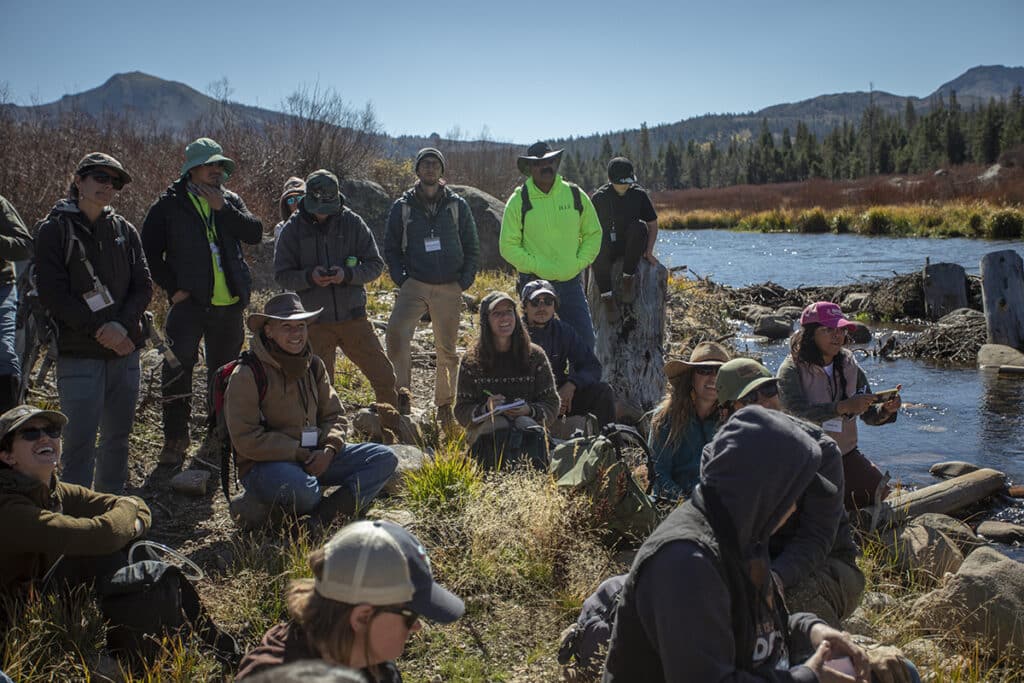
On day one of the workshop, participants gathered to hear about the project underway at Faith Valley Meadow. Julie Fair, the Director of California Headwaters Conservation at American Rivers, shared that her team is working alongside Symbiotic Restoration and Trout Unlimited to implement process-based restoration installations that will raise the bottom of the stream channel and increase the persistence of beaver structures. “We want to make structures that beaver want to plug into,” she shared.
“Apprentice to the beaver. Study them up. Every time you see a dam, stop and look to see how it’s impacting mountain meadows. Beaver have surveyed the place and made very specific choices. They are metabolically efficient,” Brock Dolman, WATER Institute Co-Director and BLAB instructor, told the group.
This year’s convening bridged process and beaver-based restoration in new ways, as Faith Valley Meadow is home to active beaver and long-established beaver wetlands—a workshop first. This context enabled participants to learn about floodplain engineering from the best ecosystem designers around: beaver.




The BLAB team learned from beaver by examining their remnant lodges, stream engineering, willow chews, and by planning PBR designs to augment pre-existing beaver infrastructures. Photos: Renée Rhodes/OAEC
On day two, the attendees took Brock’s call for beaver-based apprenticeship seriously. They worked in small design groups, walked the river, navigated networks of beaver canals, observed old dams and lodges and their hydrological effects, and planned future structures.
After a morning of thoughtful observation and planning, the group was finally ready to build like a beaver! Participants spent the afternoon working together to move trees, transport gravel, pound posts, and stuff small conifer branches into gaps in each structure. This frenzy of activity visibly slowed water and reconnected a side channel to the meadow in the first few hours of the build.






Two-legged beaver in action! This year, participants built three new channel-spanning beaver dam analogs and enhanced six additional structures.
Photos: Renée Rhodes/OAEC (1,2,4,& 6) + Brock Dolman/OAEC (3 & 5)
Along the way instructors offered insights and opportunities to reflect on the work at hand. “Don’t let this process of throwing wood in the stream fool you. You have to come out here and think like the system. No structure is going to fix everything. Always step out of the channel and see the bigger picture, because there is no one design—nature works in so many ways,” shared Karen Pope, a retired US Forest Service scientist and a Build Like a Beaver instructor.
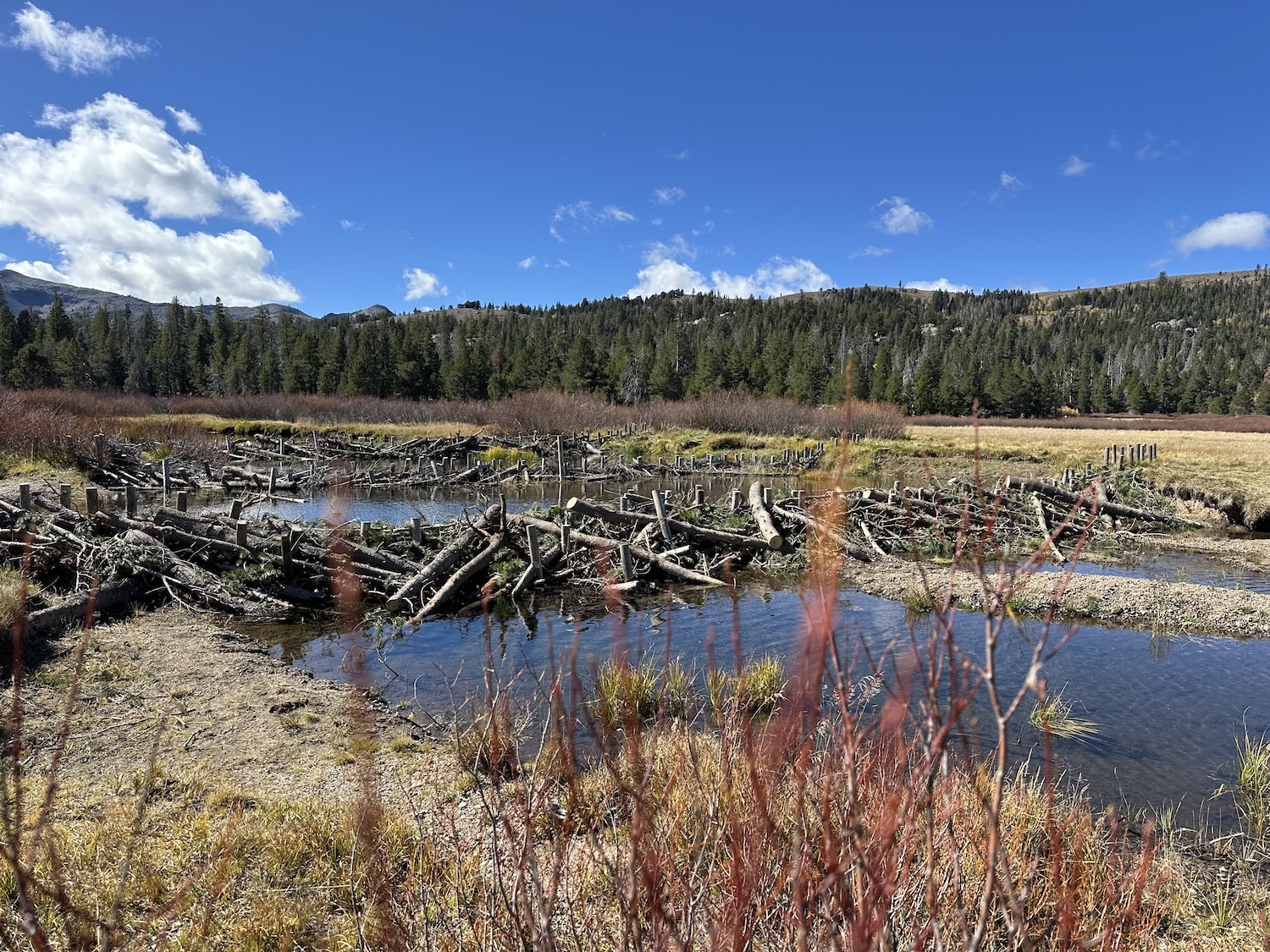
Channel-spanning beaver dam analogs like these slow water and elevate the bottom of the stream channel, bringing it closer to the floodplain over time.
Photos: Renée Rhodes/OAEC
Field work continued on days three and four alongside morning lectures covering everything from The WATER Institute’s Fuels to Flows campaign to funding sources for stream restoration to best practices for working with sensitive wildlife. Nighttime lighting talks, dinner, and music around the fire strengthened the community and encouraged networking for those seeking future work in the process-based restoration field.
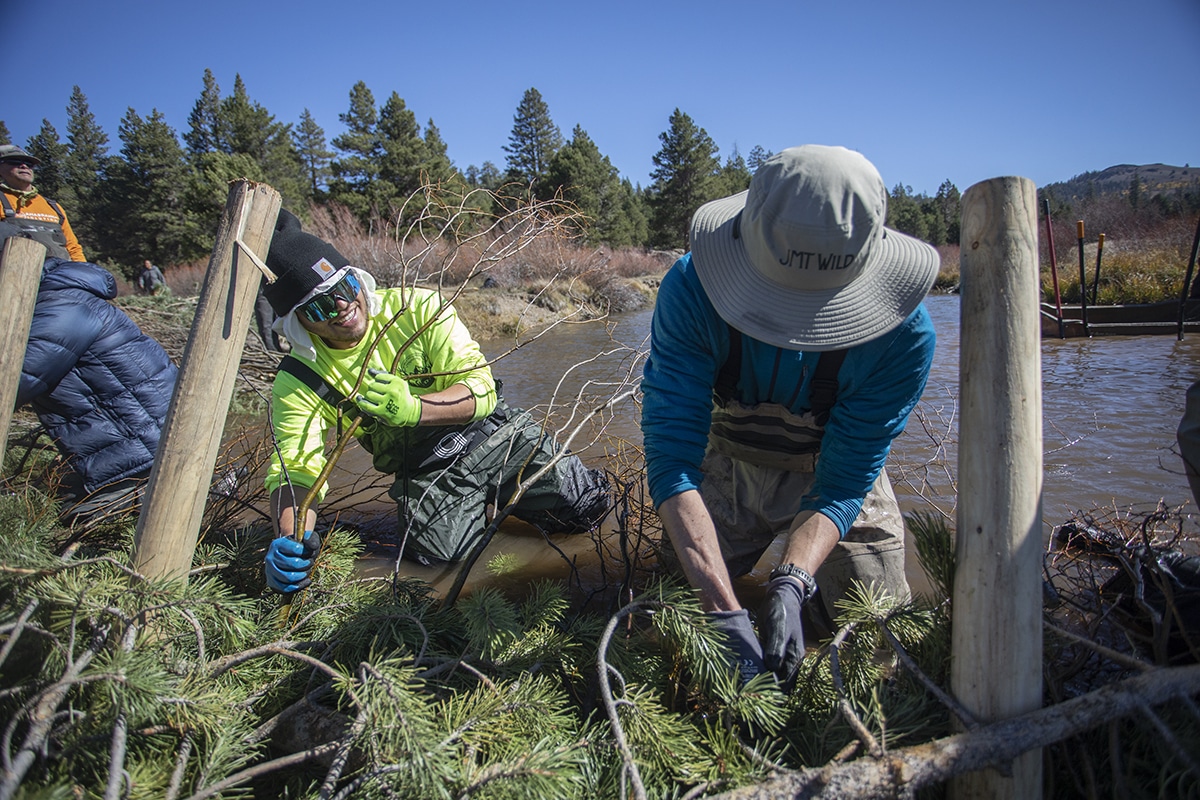
Teammates add conifer branches and willow stakes to the structure. Filling gaps with branches ensures a stable structure, especially during high flows.
Photo: Renée Rhodes/OAEC
By the workshop’s end, the meadow had changed: Stream levels had risen, side channels had been reconnected, and new areas of the meadow began holding water. Alongside these tangible improvements, attendees also gained new skills and connections that will continue to benefit California’s growing process-based restoration network into the future.
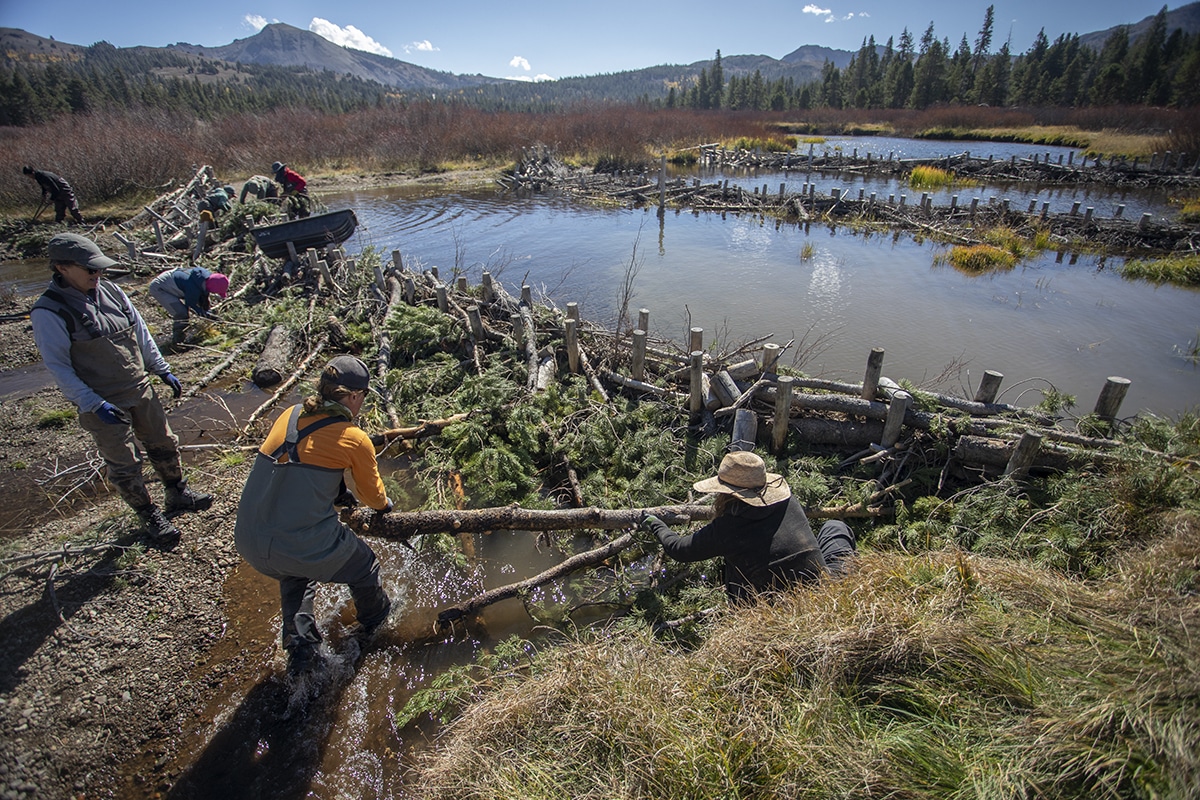
Larger logs add complexity to the stream system and weigh down lighter branches, adding stability to the structure.
Photo: Renée Rhodes/OAEC
If you would like to join us in building capacity for nature-based solutions and process-based restoration in California, please sign up for both the OAEC WATER Institute and the Cal PBR Network’s newsletters to learn more.
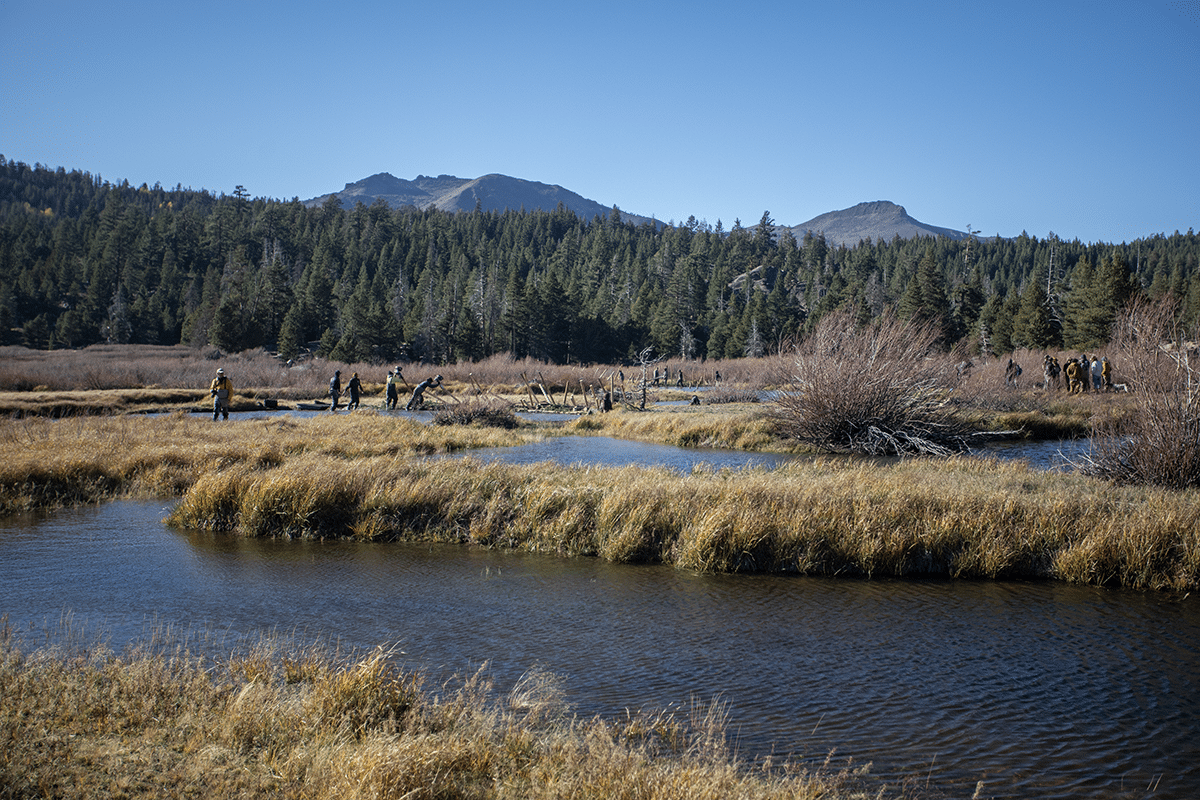
Stepping out of the channel to see the bigger picture, here’s a view of the West Fork Carson River with groups finishing up their process-based restoration builds. Photo: Renée Rhodes/OAEC
This year’s Build Like a Beaver training was made possible by generous funding and in-kind labor donations from the Mooretown Rancheria and OAEC. Additional thanks to the following CalPBR Network partners who contributed to the planning, facilitation, site preparation, and teaching at this training:
Karen Pope, Retired USFS Pacific Southwest Research Station
Kevin Swift, Paige Tomson, and crew, Swift Water Design
Garrett Costello and crew, Symbiotic Restoration
Carrie Monohan, Mooretown Rancheria
Matt Berry, Anabranch Solutions
Adam Cummings, Watershed Research and Training Center
Julie Fair, American Rivers
Sabra Purdy, Trout Unlimited
Kate Lundquist and Brock Dolman, the WATER Institute at Occidental Arts & Ecology
Jordan Vermillion and Jeneva Sorenson, Upstream Ecology
